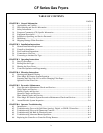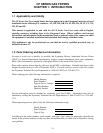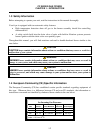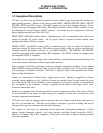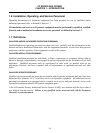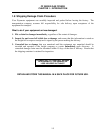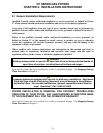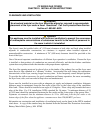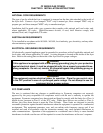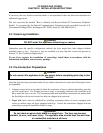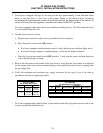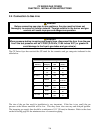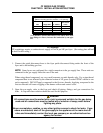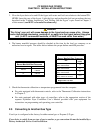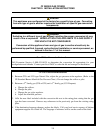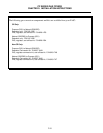
CF SERIES GAS FRYERS
CHAPTER 2: INSTALLATION INSTRUCTIONS
2-3
NATIONAL CODE REQUIREMENTS
The type of gas for which the fryer is equipped is stamped on the data plate attached to the inside of
the fryer door. Connect a fryer stamped "NAT" only to natural gas, those stamped "PRO" only to
propane gas, and those stamped "MFG" only to manufactured gas.
Installation shall be made with a gas connector that complies with national and local codes, and,
where applicable, CE codes. Quick-Disconnect devices, if used, shall likewise comply with
national, local, and, if applicable, CE codes.
AUSTRALIAN REQUIREMENTS
To be installed in accordance with AS 5601 / AG 601, local authority, gas, electricity, and any other
relevant statutory regulations
ELECTRICAL GROUNDING REQUIREMENTS
All electrically operated appliances must be grounded in accordance with all applicable national and
local codes, and, where applicable, CE codes. A wiring diagram is located on the inside of the fryer
door. Refer to the rating plate on the inside of the fryer door for proper voltages.
DANGER
If this appliance is equipped with a three-prong (grounding) plug for your protection
against electrical shock, it must be plugged directly into a properly grounded three-
prong receptacle. Do not cut, remove, or otherwise bypass the grounding prong on
this plug!
DANGER
This equipment requires electrical power for operation. Place the gas control valve
in the OFF position in case of a prolonged power outage. Do not attempt to use the
equipment during a power outage.
FCC COMPLIANCE
The user is cautioned that any changes or modifications to Frymaster computers not expressly
approved by the party responsible for compliance could void the user’s authority to operate the
equipment. Frymaster computers have been tested and found to comply with the limits for a Class A
digital device, pursuant to Part 15 of the FCC rules. While these devices are verified as Class A
devices, they have been shown to meet the Class B limits. These limits are designed to provide
reasonable protection against harmful interference when the equipment is operated in a commercial
environment. This equipment generates, uses, and can radiate radio frequency energy and, if not
installed and used in accordance with the instruction manual, may cause harmful interference to
radio communications. Operation of the equipment in a residential area is likely to cause harmful
interference in which case the user will be required to correct the interference at the user’s expense.



